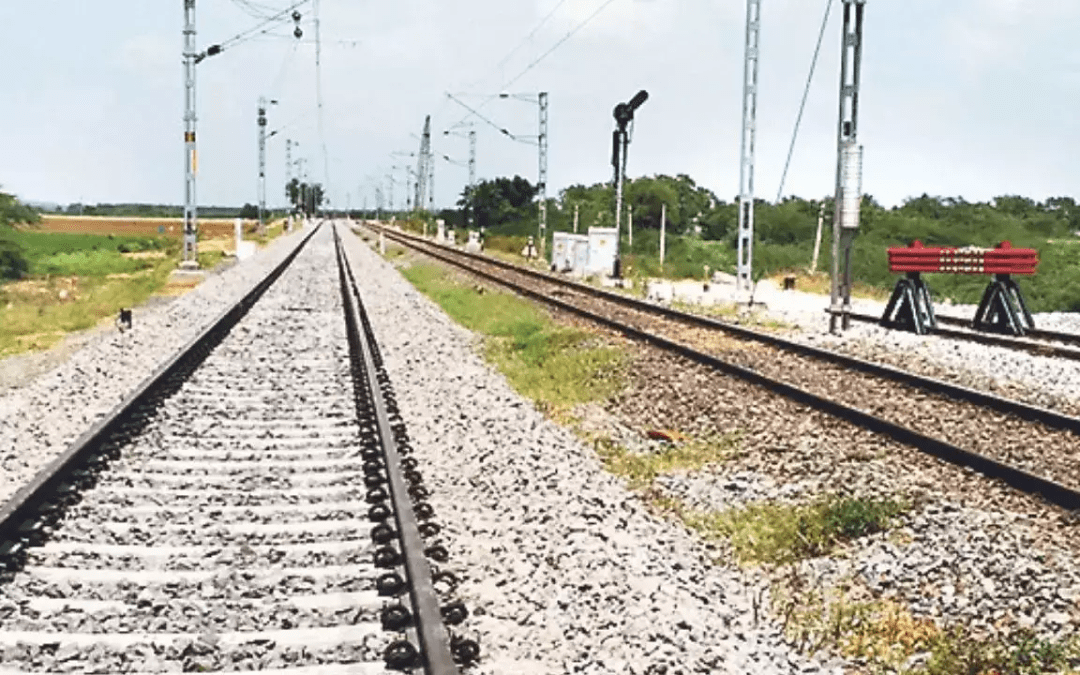The Indian Railways, a nation’s lifeline, is embarking on a significant transformation by introducing the R-350 rail track. This advanced rail technology promises to revolutionize the railway network, enhancing speed, safety, durability, and overall efficiency. As India moves towards modernizing its infrastructure, the R350 rail track stands out as a pivotal development in this journey.
How R350 Rails are Shaping The Future of Indian Railways
R350 rails are set to revolutionize Indian Railways by enabling high-speed trains and increasing capacity. These advanced high-speed tracks in India, capable of withstanding higher speeds and loads, are crucial for developing high-speed corridors, improving safety, and reducing maintenance costs. There are
Faster Speeds
One of the most remarkable benefits of the R350 rail track speed capacity is that surpasses current rail tracks. This upgrade is crucial for reducing travel times and enhancing the overall passenger experience. By enabling trains to run at faster speeds, the R350 tracks help improve the efficiency of the railway system, making it more competitive with other modes of transportation.
Also know- Top 10 Fastest Trains in India that Transforming Railway Journey
Safety
Safety has always been a top priority for Indian Railways. The R350 rail track, with its advanced engineering, significantly enhances the safety of the rail network. The superior quality and design of these tracks reduce the risk of derailments and other accidents, ensuring a safer journey for millions of passengers.
Improved Durability
Durability is another key feature of the R350 rail track. These tracks are designed to withstand higher levels of wear and tear, ensuring a longer lifespan compared to traditional rail tracks. This improved durability translates into reduced maintenance costs and fewer service disruptions, contributing to a more reliable railway system. The R350 can also withstand the speed and strength of the fastest train in India, Vande Bharat.
Made in India
As per the latest update from the government, the production of the R350 rail track in India is a testament to India’s growing capabilities in advanced manufacturing. Developed and produced within the country, these tracks reflect the nation’s commitment to self-reliance and innovation. This “Made in India” initiative not only boosts the local economy but also showcases India’s technological prowess on a global stage.
Modernization Push
The introduction of the R350 rail track is part of a broader push towards modernization within Indian Railways. This initiative includes upgrading existing infrastructure, implementing cutting-edge technologies, and enhancing passenger amenities. The R350 tracks play a critical role in this modernization drive, ensuring that the railway network meets the demands of the 21st century.
Also Read- Tips to Book Confirm Tatkal Ticket on IRCTC
Challenges and Considerations
While the R350 rail track brings numerous benefits, its implementation is not without challenges. The transition from older tracks to the new R350 tracks requires significant investment and meticulous planning. Additionally, training the workforce to handle and maintain these advanced tracks is crucial for ensuring their long-term success. Moreover, integrating the R350 tracks with the existing railway infrastructure poses technical challenges that need careful consideration.
Despite these challenges, the potential benefits of the R350 rail track far outweigh the hurdles. With strategic planning and effective execution, the Indian Railways can successfully navigate these challenges and fully realize the transformative potential of the R350 rail track.
Conclusion
The arrival of the R350 rail track represents a significant leap forward for Indian Railways. By enhancing speed, safety, durability, and contributing to the “Made in India” initiative, these advanced tracks are set to play a pivotal role in shaping the future of the railway network. As India continues its journey towards modernization, the R350 rail track stands as a symbol of progress and innovation, driving the nation towards a brighter and more connected future.



